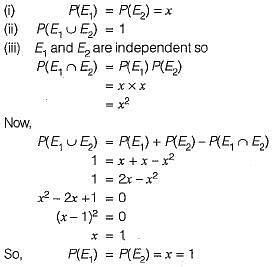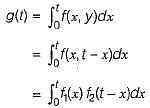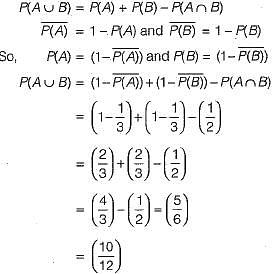Test: Probability- 1 - Civil Engineering (CE) MCQ
10 Questions MCQ Test Engineering Mathematics - Test: Probability- 1
Let A and B be any two arbitrary events, then, which one of the following is true?
A bag contains 10 white balls and 15 black balls. Two balls are drawn in succession. The probability that one of them is black and the other is white is
| 1 Crore+ students have signed up on EduRev. Have you? Download the App |
Two dice are thrown simultaneously. The probability that at least one of them will have 6 facing up is
The probability that top and bottom cards of a randomly shuffled deck are both aces is-
E1 and E2 are events in a probability space satisfying the following constraints:

The value of Pr(E1), the probability of the event E1, is
A program consists of two modules executed sequentially. Let f1(t) and f2(t) respectively denote the probability density functions of time taken to execute the two modules. The probability density function of the overall time taken to execute the program is given by
A sample space has two events A and B such that probabilities

What is P(A ∪ B)?
If the difference between the expectation of the square of a random variable (E[x2] and the square of the expectation of the random variable (E[x])2 is denoted by R, then
Consider a random variable Xthat takes values +1 and -1 with probability 0.5 each. The values of the cumulative distribution function F(x) at x = -1 and +1 are
If P and Q are two random events, then the following is TRUE
|
65 videos|120 docs|94 tests
|
|
65 videos|120 docs|94 tests
|











 and hence never negative,
and hence never negative, 




















